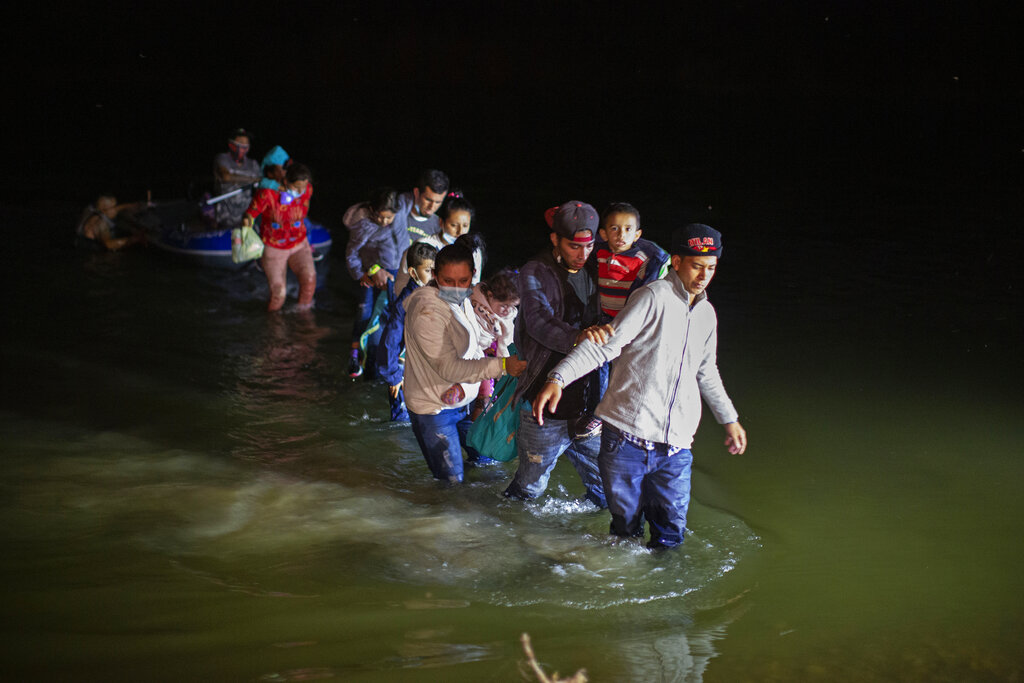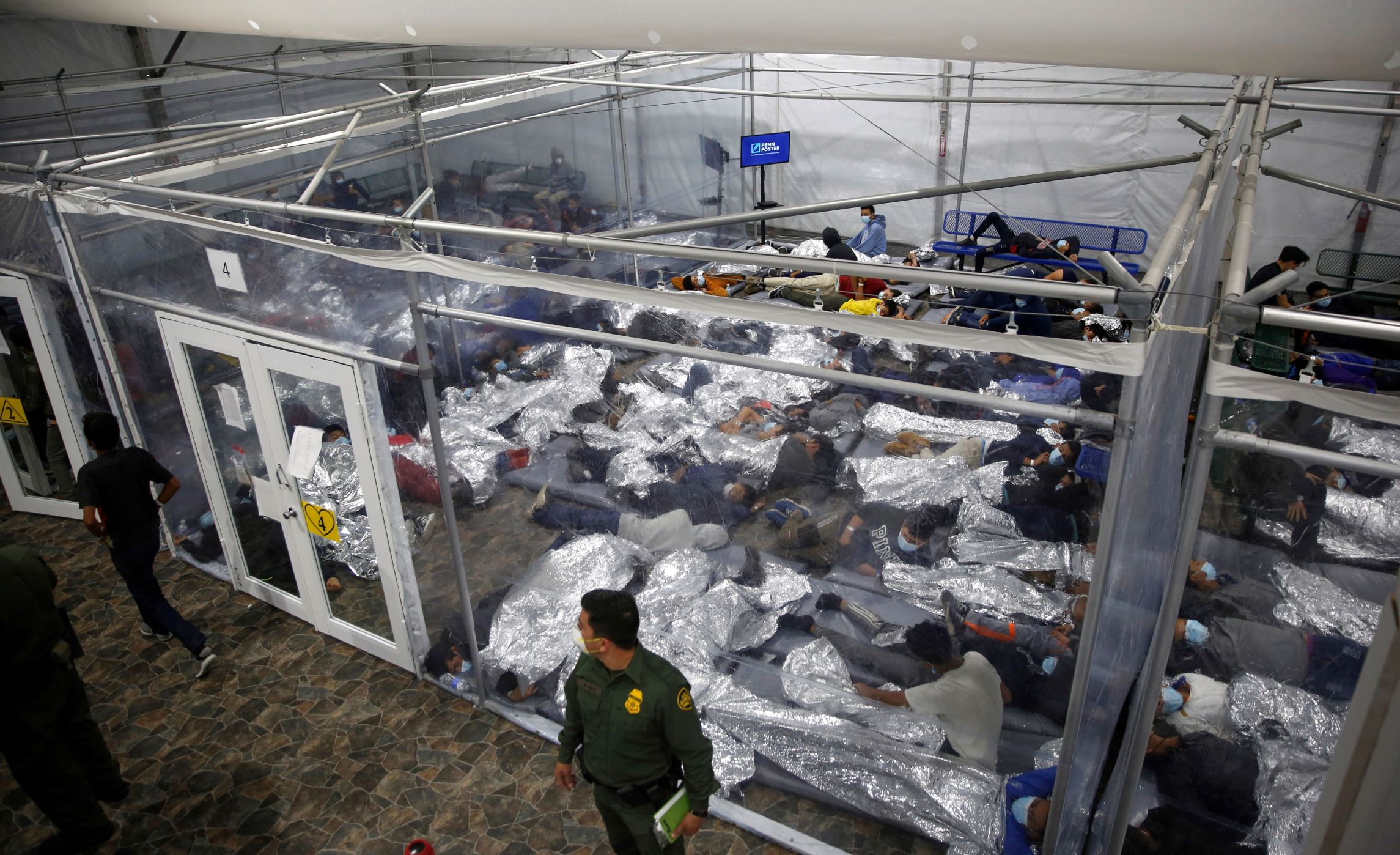More than 61,000 immigrants who illegally crossed the U.S.-Mexico border have been released into the United States since President Joe Biden took office, according to federal data.
The federal immigration agencies that are responsible for apprehending and detaining immigrants have instead discharged tens of thousands of migrants into the country, despite the Biden administration’s claims that most migrant families are not being taken into custody in the first place. And it is the first time that an administration has greenlighted the release of immigrants without telling them when to appear in court, as previous administrations have done during surges.
The U.S. Department of Homeland Security’s Border Patrol allowed 61,312 illegal immigrants to walk out of their stations in February, March, and April. The number is a staggering increase from the 18 people who were let go during former President Donald Trump’s final full month in office, when the number of families showing up at the border was one-tenth of what it is at present. (Historically, though, more people attempt to migrate to the U.S. in the springtime than in the winter or summer months.)
The releases of adults and families do not include the tens of thousands of unaccompanied children who are also being discharged by the Department of Health and Human Services.
The Biden administration claims that it is still following a coronavirus-related health guidance to turn away migrant families who make it across the border. Data from the federal immigration authorities who apprehend and detain illegal immigrants, the Border Patrol and Immigration and Customs Enforcement, revealed that instead of being turned away, many are transported to regional Border Patrol stations, where they are booked into the system and oftentimes let out the backdoor or dropped off at bus stations because the Border Patrol cannot physically accommodate the high number of families arriving and is not moving to deport them.
Border Patrol agents are so overwhelmed that they have started releasing families without giving them legal documents that mandate the families appear before an immigration judge about their unlawful entry. Rep. Henry Cuellar, a Texas Democrat, told the Washington Examiner last week that border officials are so busy processing people that they do not have time to identify the court that immigrants will be seen at.
VENEZUELANS FLEEING REPRESSION SHOWING UP IN RECORD NUMBERS. AT US-MEXICO BORDER
Cuellar said Border Patrol agents are “overwhelmed” and “don’t have the time” to issue immigrants notices to appear. Headquarters in Washington approved they’re using prosecutorial discretion to release tens of thousands of people on their own recognizance. Agents are giving immigrants papers that tell them to “contact the local ICE [Enforcement and Removal Operations] office once you arrive at your final destination.”

“It’s an honor system document. It’s an admission and release document, not a notice to appear [in court],” said Cuellar.
Before the coronavirus pandemic, families and adults encountered at the border would be arrested by the Border Patrol and then taken to a station and processed. Families would be turned over from the Border Patrol to ICE, which legally could hold them at family residential centers up to 20 days before it would have to release them. The massive backlog in the immigration courts made seeing a judge in that 20-day span impossible, prompting ICE to release most families directly into the U.S., where they can travel and live wherever they please. However, those families were given notices of when to appear in court and tracked by the government.
In 2019, a monthslong surge of families from Central America to the U.S.-Mexico border put Border Patrol in a similarly tight situation. Families were again released but tracked by the government.
The biggest change now is that families are being directly released by the Border Patrol rather than being sent to ICE, which would then release them. ICE is also doing its own releases and holding people in hotels for short periods rather than putting people in existing facilities. Border Patrol would not clarify how many of the 60,000 released were given notices to appear in court versus those who were discharged without any follow-up procedures in place.

ICE could not provide the Washington Examiner data for the number of people it has released into the U.S. since Feb. 1. Since the start of fiscal year 2021 in October 2020, ICE released 20,400 people, all of whom were not given documents requiring them to appear before a judge. The 20,400 is in addition to the 61,000 releases by the Border Patrol.
It is virtually impossible for the government to track the tens of thousands of immigrants whom it has let go, Cuellar said. Federal law enforcement employees must individually enter each person’s name to then determine if he or she has checked in with ICE after being released. Those who do not check in are unable to be tracked.
“I doubt they’ve checked 20,400 of those forms manually to see if they’ve showed up or not showed up,” said Cuellar.
CLICK HERE TO READ MORE FROM THE WASHINGTON EXAMINER
Customs and Border Protection, the federal agency that oversees the Border Patrol, said in a statement that its leadership along the southern border is “in constant communication” with the communities in which it operates about releases, and releases are done on a “case-by-case basis and only after all external avenues to repatriate or transfer custody to another agency are exhausted, and after complete background checks and a medical screening.”





